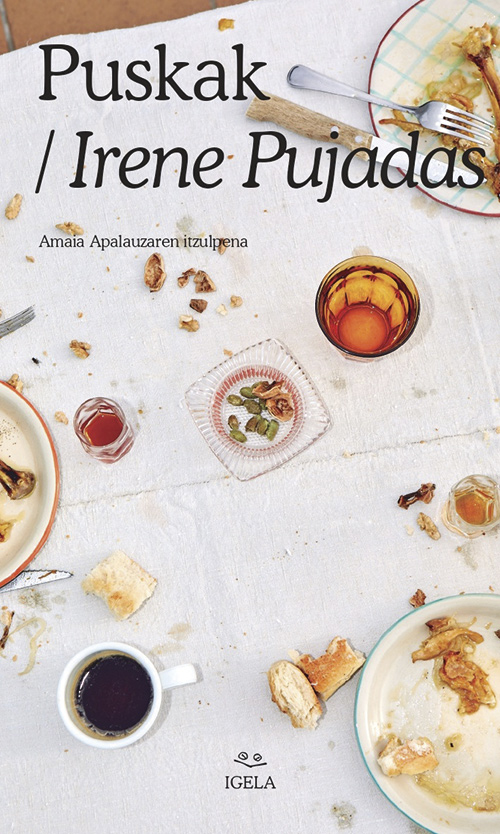

Today I come with the book Zatak, written by Irene Pujores and translated by Amaia Apalauza; although I do not do it on other occasions, today I want to dwell on the cover image. We'll see a picture of Itsaso Arizkuren showing us the moment before a meal and picking up the table; pieces of uneaten bread, chicken bone without bouncing well, some nuts cortices, a couple of pistachios that nobody wanted to eat and a cup that hasn't given the last sip to the coffee. That is, parts of a life.
The book, composed of 21 stories, has used the characteristics of this literary genre perfectly: they are compact and short texts, there is a sudden change of direction in the situation that presents itself and cause an impact on the reader (often wonder and even doubt, terror, anguish, etc.). However, a style of its own will appear that I found original and alive in many approaches. Irony, the use of black humor will condition the tone of the entire book.
We have no lines to refer to all the texts, so I have chosen three or four as a snack and excuse. The title story opens the collection: Zatak. The fall of a child in the arms takes advantage of the fear caused to the protagonist to speak of fragility and vulnerability. It did not happen: a collection tells us the situations in which the relentless are doomed to failure, and even read as failures. The story is effective, I think with the installation of the idea of failure it accuses the society that wants to drive the ideology of success. And the strategy of repetition increases anguish. The age of the questions is an interview about death, composed of questions asked by a child for innocence and answers from a tired adult. Death is a recurring theme in the book, although it does so in different places and voices.
Uxue Apaolaza mentions in her portrait that the first torpe reading asked for a more dosed rereading and writes that the second reading has been more fun. I agree with him. In my case the completion of the book at first reading has not been an easy task. Not because I didn't care, but because the stories asked me for more than one reading. And attention. Carefully, it's a book to read open ears and attentive eyes. On the second lap, though, I enjoyed it.